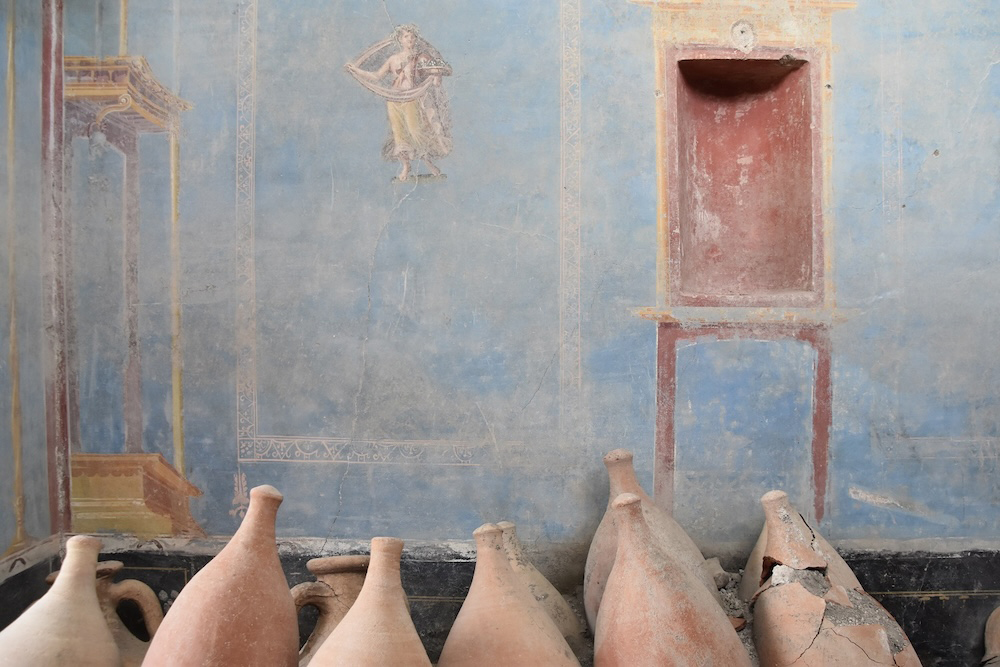Allison L. C. Emmerson (2019 Fellow) is interim Andrew W. Mellon Humanities Professor and associate professor and director of graduate studies in the Classical Studies Department at Tulane University.
Fellows and Trustees of the American Academy in Rome recently visited the ongoing excavations in Pompeii’s Region IX, where removal of the volcanic material from the eruption of Vesuvius in 79 CE has revealed incredible finds of a type unseen at the site in decades.
A dining room decorated with deep black walls and mythological scenes calls to mind a Roman dinner party, during which oil lamps would have drawn out the luminous figures, who might almost have moved under the flickering light. Niches punctuate the bright blue walls of a smaller room nearby that could have been devoted to household ritual.

The house these rooms belonged to was under redecoration at the time of the eruption, and piles of roof tiles and other building materials—even a stack of oyster shells, possibly to be crushed as temper or simply the remains of a workman’s meal—heighten that magical sense that can emerge from Pompeii: that the past residents have stepped out for a moment, and we, two thousand years later, can peek into their lives.
As we peek, however, we should not ignore the cruelties and injustices that structured Roman experience, also evidenced by the work in Region IX. The house under exploration, which likely belonged to an elite Pompeian named Aulus Rustius Verus, dedicated spaces to commerce and manufacturing: just on the other side of the black dining room are a fullonica—something like a Roman laundromat—and a bakery.
The remains of the bakery are particularly chilling. An interior room with barred windows and a locking door might have imprisoned enslaved workers, while wear patterns on the pavement speak to the backbreaking labor of the humans and animals who were forced to spend their lives turning heavy mills.
Some 350 meters south of Region IX, my own excavations in Region I—the Pompeii I.14 Project—use different techniques to reveal the lives of marginalized Pompeians. Digging below the floors of 79 CE allows us to analyze the entire course of the site’s history, from the Italian Bronze Age to the eruption of Vesuvius. We are working in a building that functioned at the time of the eruption as a restaurant—a decidedly low-class space from a Roman perspective—and a workshop manufacturing reed mats and baskets.
Graffiti attests to some of the individuals who might have lived and worked in the building, all of whom had names that strongly indicate their enslavement. These include a woman called Tegeticula, “little reed mat,” who sponsored a poster supporting a local political candidate that was painted on the building’s facade. An interdisciplinary approach that brings together humanistic research with scientific techniques and cutting-edge technologies highlights details of these individuals’ lives, from what they ate to how they recycled their garbage to how they worshipped their gods.
Pompeii has been subject to continuous archaeological research for nearly three hundred years but offers a quantity and quality of evidence simply unmatched by any other Roman site. As long as archaeologists bring new methods, new knowledge, and most importantly new questions, we’ll encounter no end to what the city can teach us about the past.
